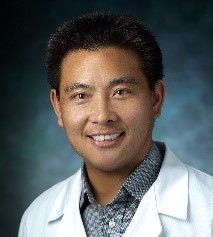2017 New Investigator Award: Shuang Yang

 Shuang Yang (John Hopkins University School of Medicine, USA)
Shuang Yang (John Hopkins University School of Medicine, USA)
What made you chose a career in bioanalysis?
When I joined Hopkins in 2011 after receiving my Ph.D. degree from the Mechanical Engineering at University of Maryland (College Park), I was about to take advantage of skills on microfluidics to interfacing with mass spectrometry. After I visited Johns Hopkins Hospital and Laboratory for Clinical Chemistry, it came to my attention that we lacked robust techniques for identification of cancer biomarkers, especially for glycoprotein biomarkers. After attending conferences and reviewing literatures, I became more and more interested in Bioanalysis and wanted to set up my career to develop novel and robust analytical platform for biomarker discovery.
.Describe the main highlights of your bioanalytical work?
Analysis of protein glycosylation requires to enrich and isolate N-linked and O-linked glycans from their proteins, as well as preserve the moiety of sialic acids during sample preparation and analysis by mass spectrometry. The platform I developed is built on the solid support. The platform conjugates glycoprotein on solid-phase for differential modification of sialic acids (α2,3, α2,6 or α2,8), linkage analysis of oligosaccharides, sequential release of N-linked glycans and O-linked glycans, and alternatively analysis of intact glycopeptides on glycosites and occupancy. To quantify the relative abundance of N-glycans in diseases, a novel isobaric tag (Quaternary Amine Containing Isobaric Tag for Glycan) is synthesized. It contains a quaternary amine that forms a single sodium abduct and enable fragmenting reporter ions during tandem mass spectrometry. This solves the issues plagued in Thermo aminoxyTMT, which forms multiple abduct ions (Na, H, K, or NH3) and generates low intensity of reporter ions. The tags enable to compare N-glycans from four different samples, making discovery of N-glycan biomarkers possible. O-linked glycans are reliably released from solid-phase with reducing-end capped by pyrazolone derivatives, preventing peeling of O-glycans and peptides. The entire pipeline was published on Nature Protocols, and applied for bioanalysis of cancer tissues, sera, and cardiac hypertrophy.
How has your work impacted your laboratory, the bioanalytical field and beyond?
The platform has been developed and fulfilled by the end of 2016. It has been incorporated as one of components for graduate and undergraduate laboratory course. This year, O-glycan will be included for the course (Techniques in Glycobiology; Johns Hopkins University). Several groups in Johns Hopkins University, including my previous lab, applied this technique for bioanalysis of protein glycosylation in different diseases. More than 20 post-docs and graduate students have been trained for the technique. I have established the platform in the laboratory of bacterial polysaccharides in Food and Drug Administration (FDA). The platform is currently adapted for high-through format using a liquid handler. I have consistently received inquiries from national and international scientists on use of this approach. I have received multiple invitations to present this platform including Glyco22 (China), international HUPO (US), NIH/FDA Glycoscience Research Day, and Pittcon (US).
Describe the most difficult challenge you have encountered in your scientific career and how you overcame it?
I encountered my first challenge when I joined Center for Biomarker Discovery and Translation (CBDT) at Johns Hopkins University. My researches during graduate training focused on engineering, reliability, and fabrication. At CBDT, I was in the completely new territory with little knowledge on cancer, glycobiology, and mass spectrometry. However, I believe myself and am confident that I can conquer the challenges. With tremendous passion and hard-work, it only took me half a year to fully understand the basics by reading literatures and books such as Essential of Glycobiology, and going through countless failed experiments. My career has taken off since 2013 in Hopkins. The other challenge I often encountered is that designed experiments do not proceed as expected. For example, sialic acid esterification has been demonstrated in solution for distinguishing α2,3 and α2,6 ; however, the reaction did not occur either in solution or on solid-phase. Then I contacted authors to learn the details; it turned out that I have to use one chemical compound that has a pH of 7. Later, the reaction took place on α2,6 but α2,3. Further communication with authors confirmed that α2,3 product is unstable and hydrolyzed. Evidently, communication is the key for success.
Describe your role in bioanalytical communities/groups?
I have been an active reviewer for many journals, including Analytical Chemistry, Journal of Proteome Research, Electrophoresis, Molecular BioSystems, Journal of Separation Science, Journal of Chromatography, Rapid Communication in Mass Spectrometry, and Clinical Proteomics. I have been a member of American Society for Mass Spectrometry, American Chemical Society, Society for Glycobiology, Chinese American Chromatography Association (CACA), and World Human Proteomic Organization. I often helped the workshop for Glycomic Session in ASMS, and workshop for CACA during the past Pittcon 2017. I regularly attend Glycobiology Interest Group (GIG) and Mass Spectrometry Interest Group in Maryland-DC-Virginia. I am willing to serve for future events by Future Science and contribute to the Bioanalytical community.
List up to five of your publications in the field of bioanalysis:
1 S. Yang, Y. Hu, L. Sokoll, and H. Zhang, “Quantitative analysis of glycans using a solid-phase method,” Nature Protocols in press (2017)
2 S. Yang, N. Hoti, W. Yang, Y. Liu, S. Li, and S. Zhang, “Sequential release and analyses of N-linked and O-linked glycans using solid-phase chemoenzymatic method,” Clinical Proteomics 2016; 14 (3):1
3 S. Yang,M. Wang,L. Chen,B. Yin,G. Song,I.V. Turko,K.W. Phinney,M.J. Betenbaugh,H. Zhang, and S. Li,“QUANTITY: an isobaric tag for quantitative glycomics,” Scientific Reports 2015,5,17585
4 S. Yang,Y. Li,P.K. Shah,and H. Zhang,“Glycomic analysis using glycoprotein immobilization for glycan extraction,” Analytical Chemistry 2013,85 (11), 5555-5561
5 S. Sun,P. Shah,S. Toghi Eshghi,W. Yang,N. Trikannad,S. Yang,L. Chen,P. Aiyetan,N. Hoti,Z. Zhang,D.W. Chan,and H. Zhang,“Solid-phase extraction of N-linked glycans and glycosite-containing peptides (NGAG) for comprehensive characterization of glycoproteins,” Nature Biotechnology 2015,34(1), 84
Find out more about this year’s New Investigator Award, the judging panel and the rest of our nominees.



